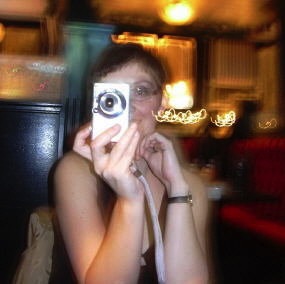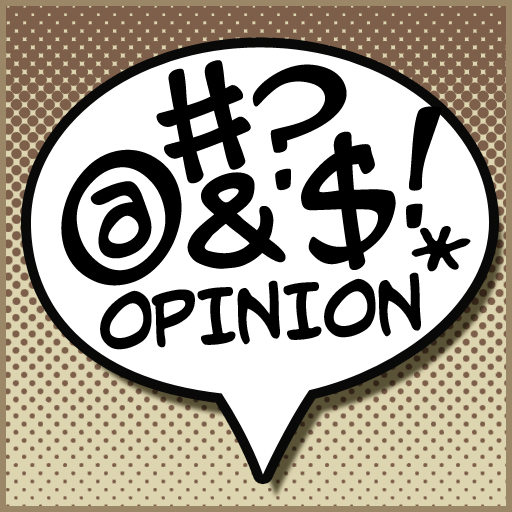Lizzie Boyle Says: The Great Comic Convention Mystery (OR Why No-One Knows What to Buy and No-One Knows How To Sell It To Them)
 Following on from last month’s column about ‘why I love digital comics’ we would like to welcome the brilliant Lizzie Boyle to Pipedream Comics as a regular columnist with the first of here series of article ‘Lizzie Boyle Says’. In this first instalment she looks at the secrets to buying and selling small press comics at UK comic conventions. So if you’re going to a convention like ThoughtBubble in Leeds at the end of the month check out her advice, you never know it might help you find the best comic you’ve never read!
Following on from last month’s column about ‘why I love digital comics’ we would like to welcome the brilliant Lizzie Boyle to Pipedream Comics as a regular columnist with the first of here series of article ‘Lizzie Boyle Says’. In this first instalment she looks at the secrets to buying and selling small press comics at UK comic conventions. So if you’re going to a convention like ThoughtBubble in Leeds at the end of the month check out her advice, you never know it might help you find the best comic you’ve never read!
One of the great success stories of the UK comics world is the growth of the small and independent press. Each year, more and more creators publish their work and, as a result, each year convention halls get bigger. This year’s ThoughtBubble (Leeds, 23-24 November) is a case in point: expanding from two halls to three, there will be well over 300 creators selling their wares.
So how does the comic reader in the street decide what to buy? And how do creators stand out from the crowd? Here are some personal bugbears from both sides of the table.
Readers first:
With so many comics to choose from, it’s worth spending time doing some research in advance. Check out the table plan of a convention and get googling. Find out what you can about the creators, the genre and style of their work and, if possible, the quality of what’s on the inside (try not to be fooled by a beautiful cover…).
Once you’re at the convention, take your time. Creators are used to people “doing a lap”, that is, going round the hall at least once to size up what they might buy. So don’t feel you have to rush into buying things.
That said, don’t just walk silently past the tables. If something catches your eye, talk to the creators and ask them about their work. What inspired them? How did the creative process work? What are they doing that’s different to other people?
Two pieces of advice now that might seem contradictory: firstly, trust your gut. If you like the look of something and you’ve had a good riffle through the pages, go for it. The worst that can happen? You’re down a few quid. The second piece of advice: experiment. If you like superheroes, buy some horror. If you like photorealism, buy something cartoony. The small press scene is a hive of creativity with as many styles as there are creators: make the most of it and allow yourself to be surprised.
Lastly: give the creators feedback. If you like something, please get in touch with the writer or artist and tell them what you liked and why. There is nothing better for an independent artist than to be told that their work has entertained, inspired or surprised someone. And if you like something, spread the word.
“The small press scene is a hive of creativity with as many styles as there are creators: make the most of it and allow yourself to be surprised.”
As for creators:
You absolutely have to be able to describe your comic in ten seconds. Not the history of the universe that you’ve invented, or the type of extra-sensory communication used by your alien race, or the exact colour balance that you used for that flame effect on the cover. Distill into ten seconds exactly what the reader will get from reading your book. I’m a publisher – at Disconnected Press. Our Disconnected volumes are “anthologies of the weird and wonderful things that happen in small towns”. You’ve got setting, you’ve got styles and you’ve got format, right there (I hope). We’ve also recently published Sentient Zombie Space Pigs, which is the comic that really needs no explanation. Give people a way to hook in to your comic: once they’re interested, then you can start to talk about the detail of universe, characters and colours.
Next piece of advice: look up. Convention visitors will stroll along staring at comics on tables. Your job is to make them stop at yours. Now, if you have an amazing table, with beautiful artwork and compelling covers (or free sweets), people will stop and you have an excuse to talk to them. But you can make it easier on yourself by standing up, making eye contact, saying hello, offering them that sweet and starting a conversation. We strike up conversations all the time in other settings, so why not at the convention? If you sit and stare down at your sketchpad (that the passer-by can’t see) or tinker with your iPad all day, don’t be surprised if no-one buys your book.
Lastly, know your customer. We’ve had tables next to creators at past conventions and it’s been amazing how consistent their customer base has been. Try to figure out who buys your work and then, if you see someone of that ilk approaching, nab them. If you’re not sure who your customers are: think about your influences and the people that are into their work. Again, some contradictory advice here: just because you have a “typical” reader, it doesn’t mean that all of your readers will be clones of each other. Allow yourself to be surprised by the people who are interested in your work; definitely don’t judge people or write them off because of age, appearance or anything else.
Disconnected Press will be at ThoughtBubble on 23 and 24 November – Table 7 in New Dock Hall (come into the hall, turn left and look for the banner with the crows on it). We’re not perfect at this so come on by, and if you find us doing any of the things we shouldn’t be doing, well, maybe we’ll have some free sweets to give away 🙂
Lizzie Boyle is an author, blogger, small press comics aficionado and founder of Disconnected Press. You can find more or writing at lizzieboylesays.wordpress.com or follow her on Twitter @lizzieboylesays


